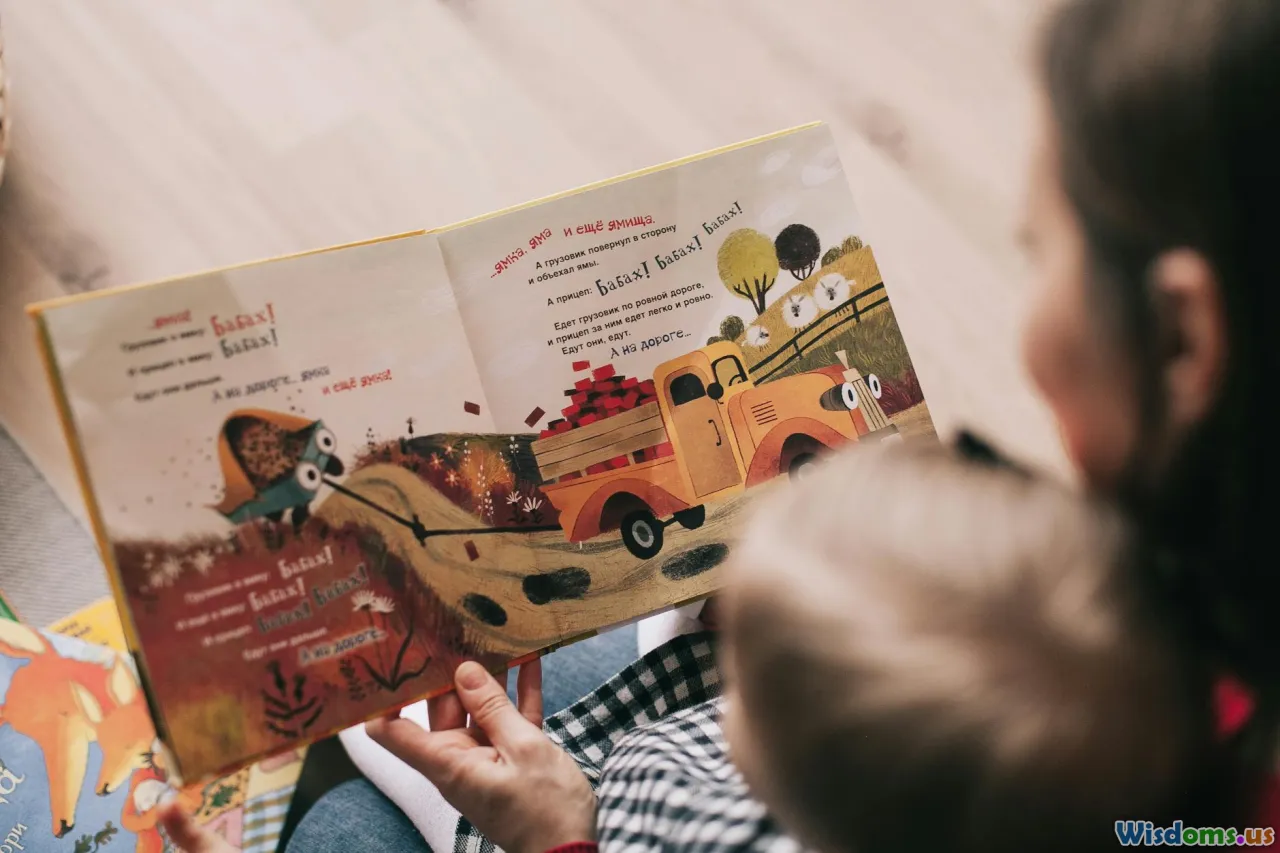
Seven Myths About How Kids Learn to Speak
12 min read Debunking common myths about how children acquire language and offering research-based insights for parents and educators. (0 Reviews)
Seven Myths About How Kids Learn to Speak
The ability to speak seems almost magical as a child goes from babbling to uttering full sentences in a matter of years. Yet, there is a surprising amount of misinformation swirling around how children actually acquire language. Well-meaning advice from relatives, headlines touting miracle methods, or persistent folklore can easily mislead parents and educators. By separating science from speculation, we can better nurture the next generation of communicators and enjoy the wonder of language development with confidence.
Myth 1: Kids Learn to Speak Just by Imitating Adults

One widespread belief is that language is acquired mainly through imitation; children supposedly mirror whatever words and phrases they overhear. While imitation does play a role—think of toddlers gleefully repeating “uh-oh!”—it’s far from the whole story.
What the Research Says
Decades of linguistic research suggest that children are not passive mimics. Noam Chomsky, a landmark figure in linguistics, highlighted how children often generate sentences they've never heard before. For example, a three-year-old might say, “I goed to the zoo,” applying grammatical rules even though no adult would ever say “goed.” This creative over-regularization shows children are actively figuring out language rules, not merely echoing adults.
Real-World Example
Suppose a parent says, “Put your shoes in the basket.” The child, grasping the verb structure, might later say, “Put teddy in bed.” Clearly, imitation alone cannot account for this innovation.
Myth 2: Early Talkers Will Always Be More Advanced

Some parents wear their child’s first word like a badge of honor, believing that earlier talking means future brilliance. While it’s undeniably exciting when a toddler pipes up early, the timing of first words is only one small part of the complex process of developing language skills.
Understanding Developmental Variations
Research shows most children say their first words between 10 and 14 months, but the range is wide. Factors include genetics, personality, and even family dynamics. Late bloomers may suddenly leap ahead, while early talkers don’t necessarily race ahead forever.
Not a Linear Predictor
Jane, for example, began constructing short sentences at 16 months. Her cousin Lucy didn’t start until nearly two. By kindergarten, both girls were equally chatty and skilled. Studies, such as those reported by the American Speech-Language-Hearing Association, confirm that by ages 6 or 7, early and late talkers often show similar language abilities. The key is steady growth, not a sprint to vocabulary prowess.
Myth 3: Bilingualism Delays Speech

Worries about speech delays often make parents wary of raising bilingual children. The myth persists—even among professionals—that exposure to two languages can confuse a child or slow progress toward communication milestones.
The Truth About Multilingual Minds
Current evidence strongly refutes these fears. The American Academy of Pediatrics and the Linguistic Society of America confirm there is no scientific basis for believing that bilingualism causes delays. Bilingual children do often mix languages or “code-switch” (e.g., mixing Spanish and English), but these are normal, healthy aspects of growing up with multiple languages.
Real Benefits
Bilingual children frequently develop metalinguistic awareness—the ability to think about language—and experience cognitive benefits. A study from York University found bilingual children outperform monolingual peers on certain switching tasks and tasks requiring mental flexibility. As long as both languages get enough exposure, children will learn to speak them proficiently.
Myth 4: Screen Time Automatically Hinders Language Development

The explosion of digital technology has led to sweeping pronouncements about screen time and speech delays. While the American Academy of Pediatrics cautions against excessive media, the reality is more complex than a simple “no screens” edict.
What Matters More Than Medium
It's not screen time per se that impedes language growth, but how screens are used. Dr. Patricia Kuhl, a leading researcher at the University of Washington, emphasizes the crucial role of social interaction. Her landmark study showed that babies learned Mandarin from live, human interaction, but not from video or audio recordings.
Interactive Versus Passive Media
Interactive, dialogic use of media—like video chatting with grandma or narrating what’s happening on-screen—can bolster language. A child watching “Sesame Street” alone learns less than one whose caregiver comments, asks questions, and encourages responses. The AAP now advises co-viewing and joint engagement to turn screen time into an opportunity for language-rich conversation.
Myth 5: Girls Are Naturally Better at Language Than Boys

Stereotypes about gender differences linger in many aspects of child development, especially regarding speech. The notion that girls are inherently more verbal than boys is commonly accepted by parents and even some professionals.
Where the Differences Lie
Yes, large samples often find girls slightly ahead, on average, in early language milestones—especially in vocabulary size and sentence complexity during the toddler years. However, these differences tend to be modest and are heavily influenced by social and environmental factors rather than unchangeable biological fate.
Far More Alike Than Different
University of Kansas researcher Dr. M.A. Huttenlocher’s influential work shows that, in the long run, there is more overlap than divergence. School-age girls and boys close the gap, and individual variation is far greater than any group difference. In practice, nurturing communication—regardless of gender—is the strongest predictor of skill.
Myth 6: There Is a "Critical Window"—Miss It, and a Child Will Never Learn to Speak Properly

People often reference the “critical period hypothesis,” the idea that there is a narrow window of opportunity for children to master language—and missing it means permanent deficits.
Flexible Yet Sensitive Periods
It’s true that the human brain is highly receptive to language learning in early childhood. For example, a child exposed to Mandarin at two typically learns it with a native accent, while an adult likely won’t. But recent studies show the window is sensitive rather than absolute. While earlier is better, ongoing plasticity means children—and even adults—are capable of remarkable language gains later in life.
Overcoming Late Starts
Consider immigrant children who arrive in English-speaking countries at age eight or ten. Many achieve full fluency within a few years. With targeted support and immersive practice, even older children with less exposure can catch up impressively.
Myth 7: Reading to Kids Isn’t Essential for Their Speaking Skills

Some people confidently assert, "Speaking happens naturally; reading is just extra." Yet a vast body of research underscores the profound influence of early shared reading not just on literacy, but on spoken language skills too.
Language Enrichment Unmatched by Conversation Alone
When adults read aloud—whether it’s board books, stories, or picture encyclopedias—they expose children to a richer vocabulary, more complex sentence structures, and a broader set of stories and ideas than everyday conversation. Dr. Betty Hart and Dr. Todd Risley’s foundational research highlighted the vast “word gap” children can face if not read to regularly, and how those differences cascade through school and beyond.
Building More Than Vocabulary
Storybooks model sustained, narrative thinking and introduce how events connect, supporting children’s ability to tell their own stories—vital for both academic and social communication. Simple routines, like reading at bedtime, accumulate into a lasting foundation for both speaking and understanding.
What Really Helps Kids Become Confident Speakers?
Understanding the facts behind these common myths highlights a vital message: children’s journeys toward fluent communication are complex, individualized, and resilient. Supportive adults who converse frequently, read engagingly, listen patiently, and expose their children to rich and diverse language experiences provide the best springboard for strong, confident speakers—regardless of when those first words arrive.
Language learning is a marathon, not a sprint or a simple mimicry act. By letting go of myths and embracing what research tells us, we can better celebrate each child’s unique path to finding their voice.
Rate the Post
User Reviews
Popular Posts


















